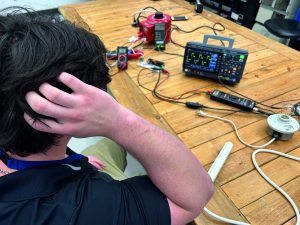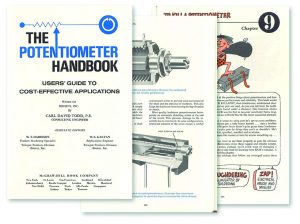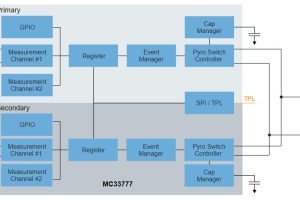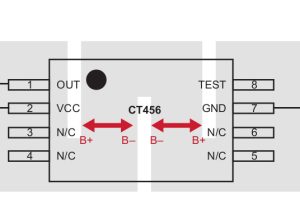 The drive to minimise power consumption in everyday devices via digitisation means much of the infrastructure needed to power these devices is largely analogue at its core.
The drive to minimise power consumption in everyday devices via digitisation means much of the infrastructure needed to power these devices is largely analogue at its core.
With analogue design being such a critical skill for systems engineers, it is quite surprising to know that technical universities are offering fewer analogue classes within their curricula. When speaking to recent engineering school graduates and their professors, it was found that most engineers focus primarily on software and digital electronics design.
Given the plethora of tools available today, such as microcontroller development boards and programmable systems, this phenomenon makes sense. Today’s engineers design digital electronics, so why would they need to use an analogue component at all?
Designing with ‘black magic’
The term black magic is colloquially used in the analogue and RF design field to describe a complex system that, all too often, will yield unexpected results not easily seen during the design phase. These may or may not be wanted effects. Black magic is not necessarily a formality of analogue circuits, but often a simple summary that stems from a lack of understanding how real-world physical effects are applied to electronics and the resulting non-linearities.
This is a completely understandable reference given how mathematically complex modelling analogue circuits can be. One could argue that most analogue designers (even those who have seniority in the field) have a difficult time finding resources that describe certain effects wholly. This leads to hours spent scouring textbooks or websites for the answer (often leading to more questions than answers).
To the dismay of most analogue engineers, debugging an analogue design can be time-consuming and the only remedy is the practical experience of building and testing a circuit.
For most electrical engineering students, for example, the potentiometer is seen as a simple resistor divider network, but its complexities are obscured and what most of academia deem “simple” requires a lengthy explanation (see Figure 1).

Figure 1: The Potentiometer Handbook from Bourns takes 200+ pages to describe the potentiometer
New recruits
Taking a role as a new analogue engineer can be daunting. In fact, it is almost like getting a degree in ‘patience’ rather than engineering.
While recent digital and computer science graduates are churning out projects, the ‘green’ analogue designer is still staring at an oscilloscope wondering why changing the case size of a capacitor altered the crossover point of their feedback network.
Unbeknown to the rest of the design team, the analogue designer is the first step to success in a new circuit design, but deadlines usually reflect the quick turnarounds of a conventional digital design. This adds another element of headache to a fresh graduate. So, why would anyone want to do this? It is abundantly clear that a shift in focus has happened.
The question misses the real issue, because it isn’t a want as much as it is a need. The ease of use of digital circuits is brought upon by scrupulous analogue designs. This is why analogue design is still relevant.
Truthfully, digital designers need analogue designers to accomplish those blazing-fast design deadlines. The black magic of most circuits has become so apparent that even digital designers are now being hired based on their analogue design experience. This will continue for the foreseeable future as clock speeds, signal integrity and data transmission increase.
Analogue design: a career choice
Analogue design also casts its net over the future of the power grid infrastructure through switch mode power supplies. Unsurprisingly, where there is a circuit, there is a need for power and analogue designers are commonly pushed to exceed 90% efficiencies, which also has its own black magic. These are just a few examples of how the world runs on analogue and that for students just graduating and new engineers there is a need for knowledge of analogue design and components.
Being in a special subset of the population that understands this black magic, analogue designers will play an important role in decarbonising the grid and power infrastructure for long-term sustainability and improving digital circuitry.
Career opportunities
While analogue design classes at university level require more mathematical rigour, the long-term payoff of being an analogue engineer is immeasurable because there is a shortage in supply of solid, competent analogue designers. A quick look at the quantity of job postings for analogue designers speaks volumes.
The work of analogue design begins at a component level. Understanding not only the basics, but also the minute details, ensures analogue designers the fastest design speeds. For a young engineer, this knowledge may be buried in what could be hours or even days of exploratory research (the black magic demystifying stage). Not surprisingly, many seasoned designers have already gone through this hazing-like process.
The typical debugging stage of an analogue design (that is, breadboard, meters, oscilloscope waveforms) can be a daunting task for young engineers who have not experienced this discipline during a university education.
To fully understand the intricacies needed for a proper evaluation, designers can look at trimming potentiometers (also known as trimmers). They can be used in a variety of configurations, including a variable resistor and resistor divider (or voltage divider). Helpful analogue components, trimmers adjust, regulate or mitigate circuit drift and can enhance an application’s functionality by offering tunability and calibration of a circuit’s output with impressive precision. Circuit adjustments achieved with trimmers can even be changed without the need to replace components, which helps shorten design cycles.
Don’t be afraid
An analogue component, such as a trimmer, is typically many times more technical than what academia teaches. In university, engineering students are instructed to simulate and design for ideal conditions, ignoring the effects of temperature dependencies.
In reality, knowledgeable engineers understand that each analogue component has its own personality and reacts differently to environmental and electrical inputs. Certainly, a potentiometer is never discussed much past it being either a voltage divider or a rheostat. This is acceptable as the degree is a stepping stone into a career filled with mysteries and black magic.
In the field of engineering, analogue design is a journey, not a destination. It is believed that analogue is ‘old school’, hard, and unwieldly. Those assumptions are not unfounded, but it is important to not let these assumptions discourage those who are interested.
Analogue design will forever direct the course of innovation, bringing new opportunities to learn and grow. With analogue’s ubiquitous nature, numerous applications in communications, signal processing, image processing, power conversion and audio processing, these are just a few of the technologies that need analogue design. These technologies can truly benefit from a high level of analogue precision to interact with real-world phenomena.
In fact, the number of applications that can benefit from good analogue design practices are nearly limitless. Multiple applications, from EV charging stations, telecommunications equipment, motor control systems, various automotive, amplifiers, professional audio and lighting controls, musical instruments, optical, pressure, liquid temperature sensors and timer/oscillators to voltage regulators, power supplies, consumer electronics, battery management, military products and factory automation are all examples of how analogue designs are not old school, but the future of many young engineers’ careers.
 Electronics Weekly Electronics Design & Components Tech News
Electronics Weekly Electronics Design & Components Tech News



